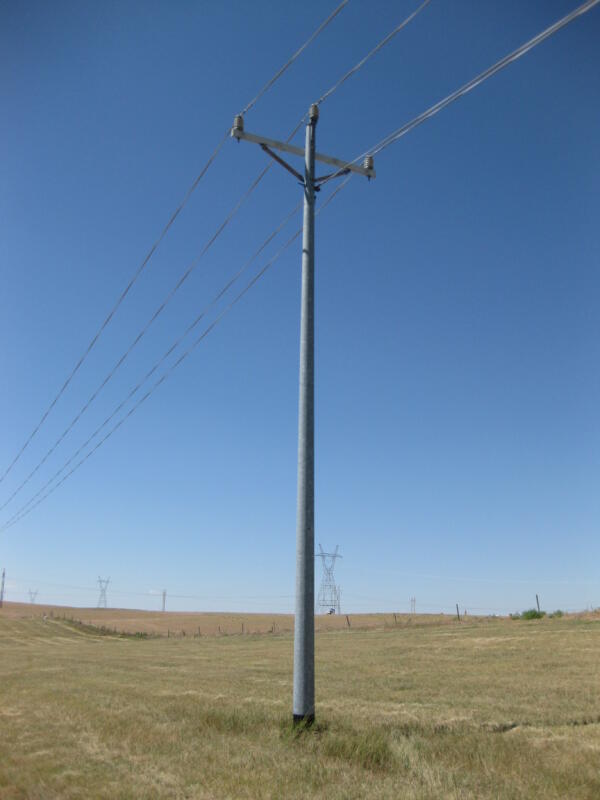NACE/IEEE Standard for Above Grade Inspection of Poles and Substations

There are an estimated 900,000 electric utility steel transmission and distribution structures in North America alone. The majority of these structures, many of them hot-dip galvanized, were installed between 1950 and 1990. These structures are now an average of about 45 years of age and require inspection and asset management strategies.
The NACE/IEEE Committee on inspection of electrical poles and structures has completed the latest standard on above ground corrosion inspection, NACE SP21459/IEEE Std 2655, “Atmospheric Above Grade Inspection and Assessment of Corrosion on Steel Electrical Transmission, Distribution, and Substation Structures." This standard compliments the below ground inspection of poles and electrical structures standard that was released in 2018. The two standards on inspection for corrosion damage to electrical poles and structures are intended to give utilities some practical guides to performing an inspection of poles and structures in the field. The standards are organized into three tiers depending on the skills of the inspectors.
The simplest inspection, Tier 1, can be performed by linemen and will usually consist of photos and notes on visible conditions of the poles and structures. The second level of inspection, Tier 2, is intended to determine the extent of the corrosion if the Tier 1 located an area of corrosion. Tier 2 is usually performed by a corrosion specialist. The third inspection, Tier 3, involves determining the cause of the corrosion and the further work on the corroded pole or structure. The Tier 3 inspection is performed by a corrosion specialist who recommends to the utility how to treat a structure that is experiencing corrosion. These two standards can be obtained through NACE or IEEE.
Prior to the publication of this standard, no industry practice existed to help electric utilities determine a prioritized listing of structures to be inspected nor a procedure to evaluate above-grade atmospheric corrosion problems.
Tom Langill of the AGA was a part of Task Group TG 529 that developed the standard. He provided expertise on the performance and inspection of hot-dip galvanized structures for a series of four NACE/IEEE joint standards developed by Task Groups 432, 538, and 529 between 2015 – 2020:
- NACE SP0215/IEEE Std. 1839 focuses on below-grade corrosion control and provides general coating repair guidelines for in-service electric transmission structures including galvanized steel.
- NACE SP0315/IEEE Std. 1835 applies to the repair of above-grade atmospheric coatings such as HDG, and defines the atmospheric area of the structure to be coated.
- NACE SP0415/IEEE Std. 1895 provides guidance for implementing common inspection practices and technology on the below-grade areas of steel transmission towers, poles, and substation structures, including galvanized steel.
- NACE SP21459/IEEE Std 2655 addresses the atmospheric above-grade inspection and assessment of corrosion electrical transmission, distribution, and substation structures (including HDG) as a companion to NACE SP0415/IEEE Std 1895.
NACE/IEEE standards can be purchased through the AMPP store.
For more history on the development of these joint standards and their impact to the overall industry:
New Standards Provide Maintenance Guidelines for the Electric Power Industry By Trudy Schreiner; Materials Performance Magazine; NACE (4 May 2020)
© 2025 American Galvanizers Association. The material provided herein has been developed to provide accurate and authoritative information about after-fabrication hot-dip galvanized steel. This material provides general information only and is not intended as a substitute for competent professional examination and verification as to suitability and applicability. The information provided herein is not intended as a representation or warranty on the part of the AGA. Anyone making use of this information assumes all liability arising from such use.


